Acer Chromebook 311 (CB311-9H) review – a reasonable tablet replacement
What if you only need your laptop for browsing the Web, occasionally sending mails and watching movies? Well, that’s exactly what Chrome OS is made for. No matter whether you get it for your kid, for yourself or even for your employees. This browser-based operating system is far more capable than just scrolling through the Web.
In fact, with the development of Android, which sits at the base of Chrome OS, far more capabilities have opened for the users. Now, the Chromebook 311 (CB311-9H) is quite a budget offering. It features a 6W Intel processor (for better or for worse), 4GB of LPDDR4 memory and eMMC storage. Indeed, it’s not going to blow your mind in terms of performance, but if you are really into buying something based on Chrome OS, you are definitely not on the market for power.
You can look at it more like a tablet replacement. Instead of having you buy accessories such as dedicated keyboards with trackpad support, why don’t you check the Chromebook 311 and see if it is any good? Let’s get right into it and see if it is even worth it to consider a Chromebook in 2020.
You can check the prices and configurations in our Specs System: https://laptopmedia.com/series/acer-chromebook-311-cb311-9h-cb311-9ht/
Contents
Specs Sheet
- Display
- 11.6”, HD (1366 x 768), IPS
- HDD/SSD
- up to 64GB SSD
- RAM
- up to 4GB
- OS
- Chrome OS
- Battery
- 38Wh, 3-cell, 39Wh
- Dimensions
- 296 x 199 x 18.1 mm (11.65" x 7.83" x 0.71")
- Weight
- 1.10 kg (2.4 lbs)
- Ports and connectivity
- 2x USB Type-A
- 3.2 Gen 1 (5 Gbps)
- 2x USB Type-C
- 3.2 Gen 1 (5 Gbps), DisplayPort
- Card reader
- MicroSD
- Wi-Fi
- 802.11ac
- Bluetooth
- 5.0
- Audio jack
- 3.5 mm combo
- Features
- Fingerprint reader
- Web camera
- Backlit keyboard
- optional
- Microphone
- Speakers
- 2 Stereo Speakers
- Optical drive
- Security Lock slot
All Acer Chromebook 311 (CB311-9H, CB311-9HT) configurations
What’s in the box?
Inside the box we didn’t find much besides the laptop itself, some paper manuals and a 45W power brick with USB Type-C connection.
Design and construction
Although the device has a profile of 18.2 mm (a bit thick for an 11-incher), it weighs just 1.10 kg. This comes in a combination with the all-plastic build. Design-wise it is bathed in silver and has a matte finish. Well, this is the case for the outside, as you open the lid, you’ll see a black brushed plastic for the base. Despite the rather cheap build, the laptop gives you confidence in the hand, thanks to its sturdy chassis.
Opening the lid is impossible with a single hand. However, when you manage to open it, you’ll find huge bezels all around the display. This does make the laptop look a lot older than it is, and it looks quite bad. Speaking of the display, it has a glossy finish and touchscreen support. Despite that, there is no glass protection, as we saw on the Acer Chromebook Spin 311 (CP311-2H).
Now, let’s talk a bit about the keyboard deck. Honestly, the material feels a bit cheap. However, there is very little-to-no bending going on, even when you press hard on it. The keyboard, itself is decent-enough and is pretty comfortable to type on, thanks to the rather long travel and clicky feedback. Similarly, the touchpad feels accurate and relatively fast (for a Chromebook, of course). Its clicking mechanism is built underneath the surface, which means there are no dedicated keys. Expectedly, it detects input when you press the bottom half of the touchpad.
On the bottom, you’ll see the speaker grills, only.
Ports
On the left, there is a USB Type-C 3.1 (Gen. 1) port, which is used for charging and has DisplayPort capabilities. Next to it, you’ll find a USB Type-A 3.1 (Gen. 1) port, a MicroSD card reader and an Audio Jack. Then, on the right, you can see the Kensington lock, as well as the same USB configuration as on the other side. Ultimately, this means you can charge the laptop from both sides.
Disassembly, upgrade options and maintenance
There are a total of 12 Phillips-head screws holding the bottom panel of this Chromebook 311 in place. After you remove them, pry the plate up with a plastic tool, carefully working your way around the device. Then, just pop it up and you’ll see the internals.
Not that there is much to see, though. As the motherboard is placed upside-down, we don’t really have a view on the cooling element. However, we know for sure, that it is a passive solution, as it obviously lacks a fan.
Since all of the memory and the storage is soldered to the motherboard, we cannot talk about any upgradability on this thing, whatsoever. As of the numbers, the memory consists of 4GB of LPDDR4 modules, while the storage is a 32GB eMMC drive. Indeed, this is a very lean setup, but on the bright side, you can expand your storage via the MicroSD card slot. Additionally, on the image below, you can see the Wi-Fi card, which is an Intel 9560NGW unit.
In terms of battery, the laptop is equipped with a 39Wh package.
Display quality
Acer Chromebook 311 (CB311-9H) is equipped with a touchscreen IPS panel, AUO B116HAN04.0 (AUO405C). Its diagonal is 11.6-inch (29.5 cm), and the resolution – 1366 х 768p. Additionally, the screen ratio is 16:9, the pixel density – 135 ppi, their pitch – 0.19 х 0.19 mm. The screen can be considered Retina when viewed from at least 64 cm (from this distance, the average human eye can’t see the individual pixels).
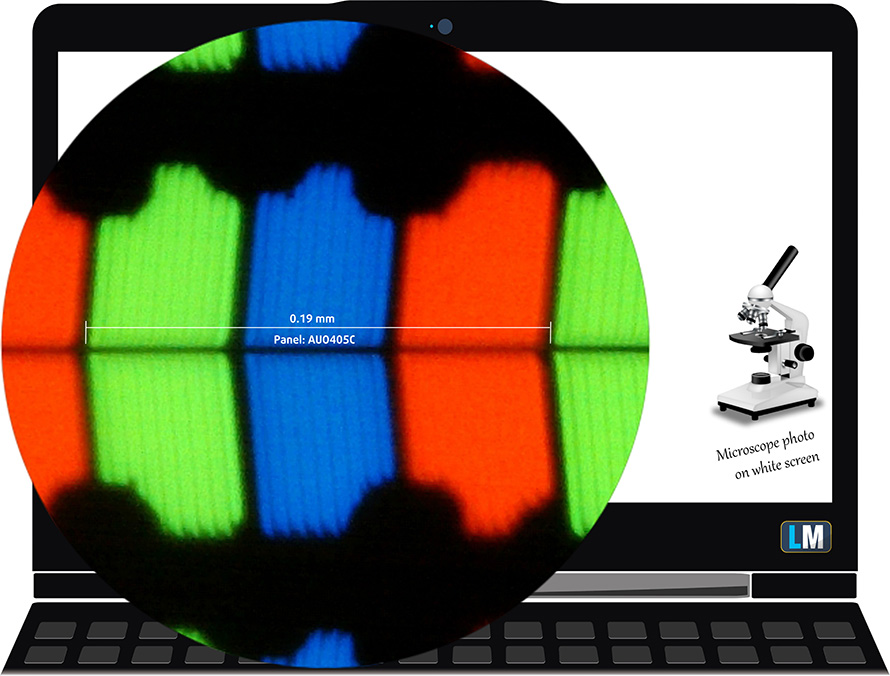
Viewing angles are comfortable. We offer images at different angles to evaluate the quality.

The maximum measured brightness is 247 nits (cd/m2) in the middle of the screen and 250 nits (cd/m2) average across the surface with a maximum deviation of just 3%. The Correlated Color Temperature on a white screen and at maximum brightness is 6700K – slightly colder than the 6500K temperature for sRGB.
In the illustration below you can see how the display performs from uniformity perspective. The illustration below shows how matters are for operational brightness levels (approximately 140 nits) – in this particular case at 72% Brightness (White level = 141 cd/m2, Black level = 0.1 cd/m2).
Values of dE2000 over 4.0 should not occur, and this parameter is one of the first you should check if you intend to use the laptop for color-sensitive work (a maximum tolerance of 2.0 ). The contrast ratio is excellent – 1360:1.
To make sure we are on the same page, we would like to give you a little introduction to the sRGB color gamut and the Adobe RGB. To start, there’s the CIE 1976 Uniform Chromaticity Diagram that represents the visible specter of colors by the human eye, giving you a better perception of the color gamut coverage and the color accuracy.
Inside the black triangle, you will see the standard color gamut (sRGB) that is being used by millions of people in HDTV and on the web. As for the Adobe RGB, this is used in professional cameras, monitors, etc for printing. Basically, colors inside the black triangle are used by everyone and this is the essential part of the color quality and color accuracy of a mainstream notebook.
Still, we’ve included other color spaces like the famous DCI-P3 standard used by movie studios, as well as the digital UHD Rec.2020 standard. Rec.2020, however, is still a thing of the future and it’s difficult for today’s displays to cover that well. We’ve also included the so-called Michael Pointer gamut, or Pointer’s gamut, which represents the colors that naturally occur around us every day.
The yellow dotted line shows Acer Chromebook 311 (CB311-9H)’s color gamut coverage.
Its display covers 56% of the sRGB/ITU-R BT.709 (web/HDTV standard) in CIE1976.

We tested the accuracy of the display with 24 commonly used colors like light and dark human skin, blue sky, green grass, orange, etc.

Response time (Gaming capabilities)
We test the reaction time of the pixels with the usual “black-to-white” and “white-to-black” method from 10% to 90% and vice versa.
We recorded Fall Time + Rise Time = 29 ms.

Health impact – PWM / Blue Light
PWM (Screen flickering)
Pulse-width modulation (PWM) is an easy way to control monitor brightness. When you lower the brightness, the light intensity of the backlight is not lowered, but instead turned off and on by the electronics with a frequency indistinguishable to the human eye. In these light impulses, the light/no-light time ratio varies, while brightness remains unchanged, which is harmful to your eyes. You can read more about that in our dedicated article on PWM.
Acer Chromebook 311 (CB311-9H)’s backlight lacks PWM in all brightness levels. This makes it comfortable for long periods of use, without being harmful to your eyes in this aspect.

Conclusion
Acer Chromebook 311 (CB311-9H)’s display comes with an IPS panel with comfortable viewing angles, good contrast ratio, adequate default settings and a backlight that lacks PWM. It’s only disadvantage is the narrow color coverage.
Sound
Acer Chromebook 311 (CB311-9H)’s speakers produce a clear, yet quiet sound. Its low, mid and high tones are clear of deviations.

Software
Acer Chromebook Spin 311 (CP311-2H) comes with everything preinstalled and will download updates automatically, when available. Our unit’s version of Chrome OS is 83.0.4091.0 and it is based on Android 9.0.
Battery
Now, we conduct the battery tests with Windows Better performance setting turned on, screen brightness adjusted to 120 nits and all other programs turned off except for the one we are testing the notebook with.
In order to simulate real-life conditions, we used our own script for automatic web browsing through over 70 websites.
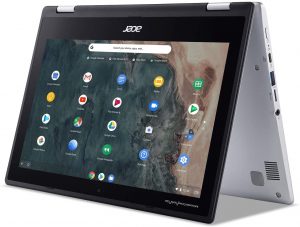

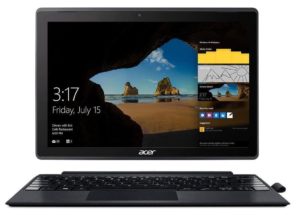
For every test like this, we use the same video in HD.



CPU options
This device is equipped with an Intel Celeron N4100 quad-core CPU. It is part of the Goldmont Plus family of 6W devices and runs at a base clock speed of 1.10 GHz with a maximum operating frequency of 2.40 GHz. Additionally, it has 4MB of the cache.
| CPU Benchmarks | single/multi Geekbench 5 | PCMark Computer Vision | Octane V2 | Mozilla Kraken 1.1 |
|---|---|---|---|---|
| Acer Chromebook 311 (CB311-9H) | 404/1410 | 7073 | 15704 | 2432.7 ms |
| Acer Chromebook 314 (C933) | 531/1655 | 9027 | 21011 | 1988.7 ms |
| Acer Chromebook Spin 11 (CP311-2H) | 378/1281 | 7122 | 15505 | 2457.7 ms |
GPU options
Its integrated graphics solution is the Intel UHD Graphics 600. During load, it can reach 700 MHz up from the 300 MHz base frequency.
| GPU Benchmarks | 3DMark Slingshot | GFXBench Manhattan 3.0 (1080p offscreen) | GFXBench Manhattan 3.1 (1080p offscreen) | GFXBench Aztec Ruins OpenGL (1080p offscreen) |
|---|---|---|---|---|
| Acer Chromebook 311 (CB311-9H) | 2610 | 22 fps | 16 fps | 11 fps |
| Acer Chromebook 314 (C933) | 2430 | 20 fps | 16 fps | 11 fps |
| Acer Chromebook Spin 11 (CP311-2H) | 2613 | 22 fps | 16 fps | 11 fps |
Temperatures and comfort
In order to stress out the machine, we used a neat free app on the Play Store called CPU Throttling Test. Ultimately, it simulates a 100% load on the CPU, thus heating it as much as possible. So, despite it is very comfortable and pleasing not to hear any noise, the keyboard becomes quite warm – warmer than what we’ve expected from a laptop with such a 6W TDP processor.


Verdict
It’s time to wrap it up. For a small, very budget-oriented device, there is nothing much you can expect. Yes, the chipset is slow, the built quality is not the best, and at the least – the operating system has some disadvantages to Windows.
However, this doesn’t mean it is not good. In the beginning, we clarified that this is no beast in terms of performance. Quite the contrary, actually. Although this is definitely not great, it has very good efficiency, mainly thanks to the modest 6W TDP. Additionally, Acer has fitted a decently sized battery – 39Wh, which is very good for an 11-inch laptop.
In practice, this results in almost 12 hours of Web browsing and around 7 hours of video playback. Just keep in mind that this is in case you are browsing in a single tab at 120 nits, so your mileage might vary.
As of the build quality, despite the plastic material, the laptop is very well built and feels very sturdy. The keyboard is good, as is the touchpad. And although you’ll probably find the lack of upgradability frustrating (or at least we did), you have the opportunity to expand the internal storage with a MicroSD card. By the way, it was refreshing to see that a device of this caliber has two USB Type-A ports and two USB Type-Cs, both of which can be used for charging and outputting a DisplayPort signal.
Acer Chromebook 311 (CB311-9H)’s display comes with an IPS panel with comfortable viewing angles, good contrast ratio, adequate default settings and a backlight that lacks PWM. It’s the only disadvantage is the narrow color coverage.
Now, after we’ve clarified that you won’t be playing anything more graphically intensive than Hill Climb, or the “you are not connected to the Internet” Chrome dinosaur game, the laptop is pretty usable. Yes, you have to close your eyes for things like the huge bezels, but the Chrome OS experience is better than ever before.
Pros
- Snappy experience
- The OS loads in an instant
- Two USB Type-C ports that charge the laptop and can output DisplayPort
- Its display has comfortable viewing angles and good contrast ratio (BOE BOE07A0)
- Doesn’t use PWM to adjust screen brightness (BOE BOE07A0)
- MicroSD card storage expansion
Cons
- All-plastic build
- Covers only 56% of sRGB
- Memory and storage are soldered to the motherboard
- Feels clunky and dated because of its fat bezels
You can check the prices and configurations in our Specs System: https://laptopmedia.com/series/acer-chromebook-311-cb311-9h-cb311-9ht/

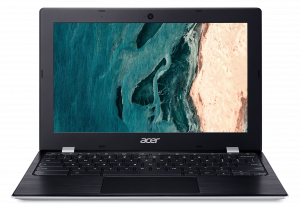
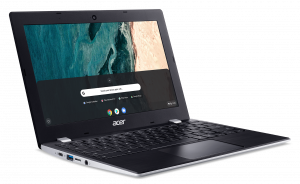
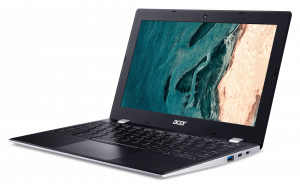




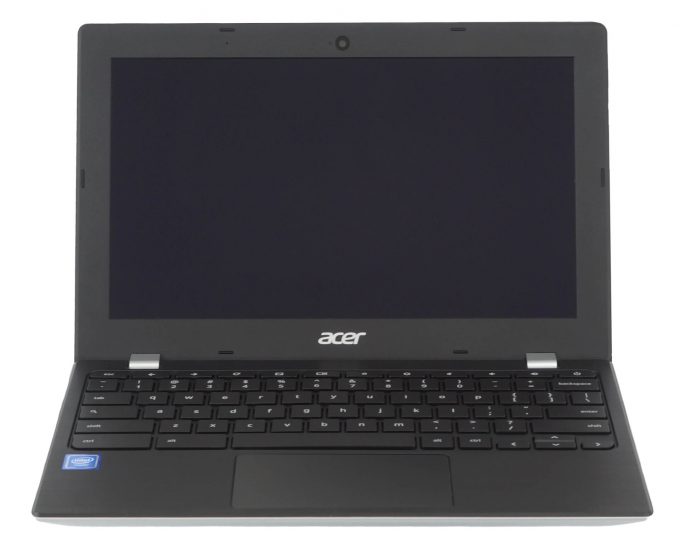







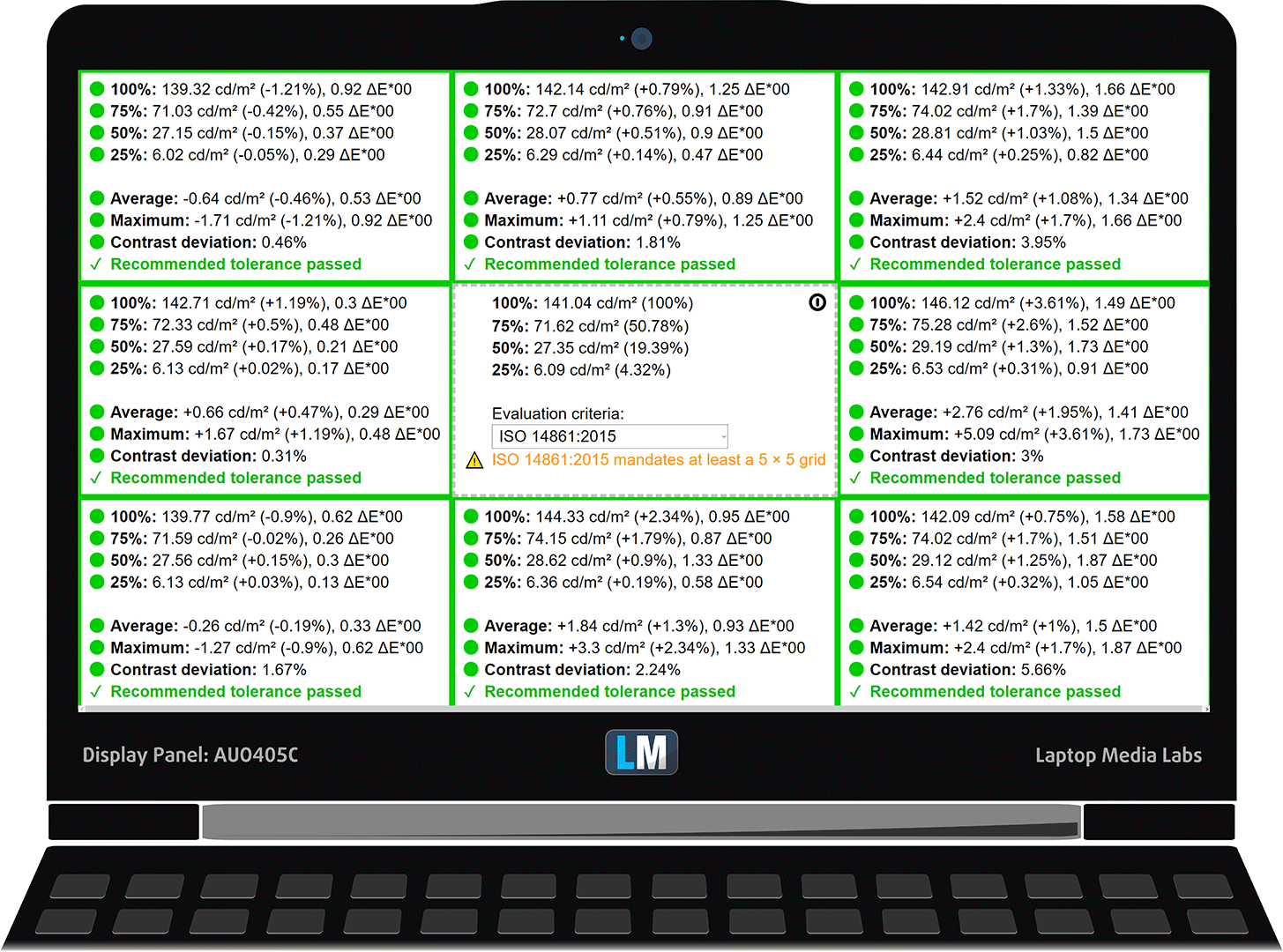
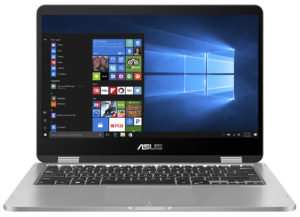








Very helpful review, but I want to point out that definitely not all CB311 models have a glossy display. My CB311-9H-C12A is anti-glare. Maybe only the touch screen CB311 models are glossy.
My model has no touch screen and a flat black screen with no gloss. I have to say this computer cost me $200.00 and in my opinion, the build quality is excellent for the price. The keyboard feels great, and the computer is plenty fast for Chrome. I am extremely happy with this computer and find it an exceptional value. This is my first Chromebook and I am in love with its simplicity and speed. It does everything I could ask for internet and office type productivity. It does exactly what it is mean’t too and does it well.
Target has this one for $120 if you have Target Circle